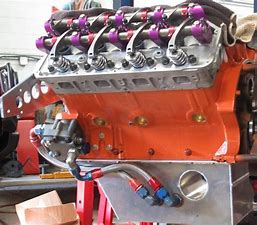rmchrgr
Well-Known Member
Working on a set of brand new 440 Source Stealth heads. The valve guides seem excessively tight.
The heads were disassembled to be checked before installation. Unfortunately, the valves were really tough to get out just by pulling them. When they finally came free, there were brass shavings coming out. It appeared like the top of the keeper grooves were actually cutting into the guides. Getting them back in required a good smack with a soft mallet.
Brass shavings.

Note brass shavings under top of keeper grooves.

Note the scratches in the guide.

Not sure if this situation is really bad, normal or somewhere in between. Never had this happen to me before so I have no point of reference. I'm thinking it can't be great. Obviously you don't want loose guides but given that the heads will expand, I'm thinking the valves are going to stick and/or get burned up.
So if this needs to be fixed, whats the approach?
Second issue - this seems to have happened while handling the heads, not really sure how but there is a pretty good gouge/scratch in the head surface. You can definitely catch a nail on it. Thinking the edges should be smoothed over with Scotch Brite but that's it? Hoping the head gasket will seal this up, using Fel Pro 8519-PT-1.

These heads are going on a fairly mild 438" stroker, 100% street driven. Thanks for any input.
- Greg
The heads were disassembled to be checked before installation. Unfortunately, the valves were really tough to get out just by pulling them. When they finally came free, there were brass shavings coming out. It appeared like the top of the keeper grooves were actually cutting into the guides. Getting them back in required a good smack with a soft mallet.
Brass shavings.
Note brass shavings under top of keeper grooves.
Note the scratches in the guide.
Not sure if this situation is really bad, normal or somewhere in between. Never had this happen to me before so I have no point of reference. I'm thinking it can't be great. Obviously you don't want loose guides but given that the heads will expand, I'm thinking the valves are going to stick and/or get burned up.
So if this needs to be fixed, whats the approach?
Second issue - this seems to have happened while handling the heads, not really sure how but there is a pretty good gouge/scratch in the head surface. You can definitely catch a nail on it. Thinking the edges should be smoothed over with Scotch Brite but that's it? Hoping the head gasket will seal this up, using Fel Pro 8519-PT-1.
These heads are going on a fairly mild 438" stroker, 100% street driven. Thanks for any input.
- Greg




















